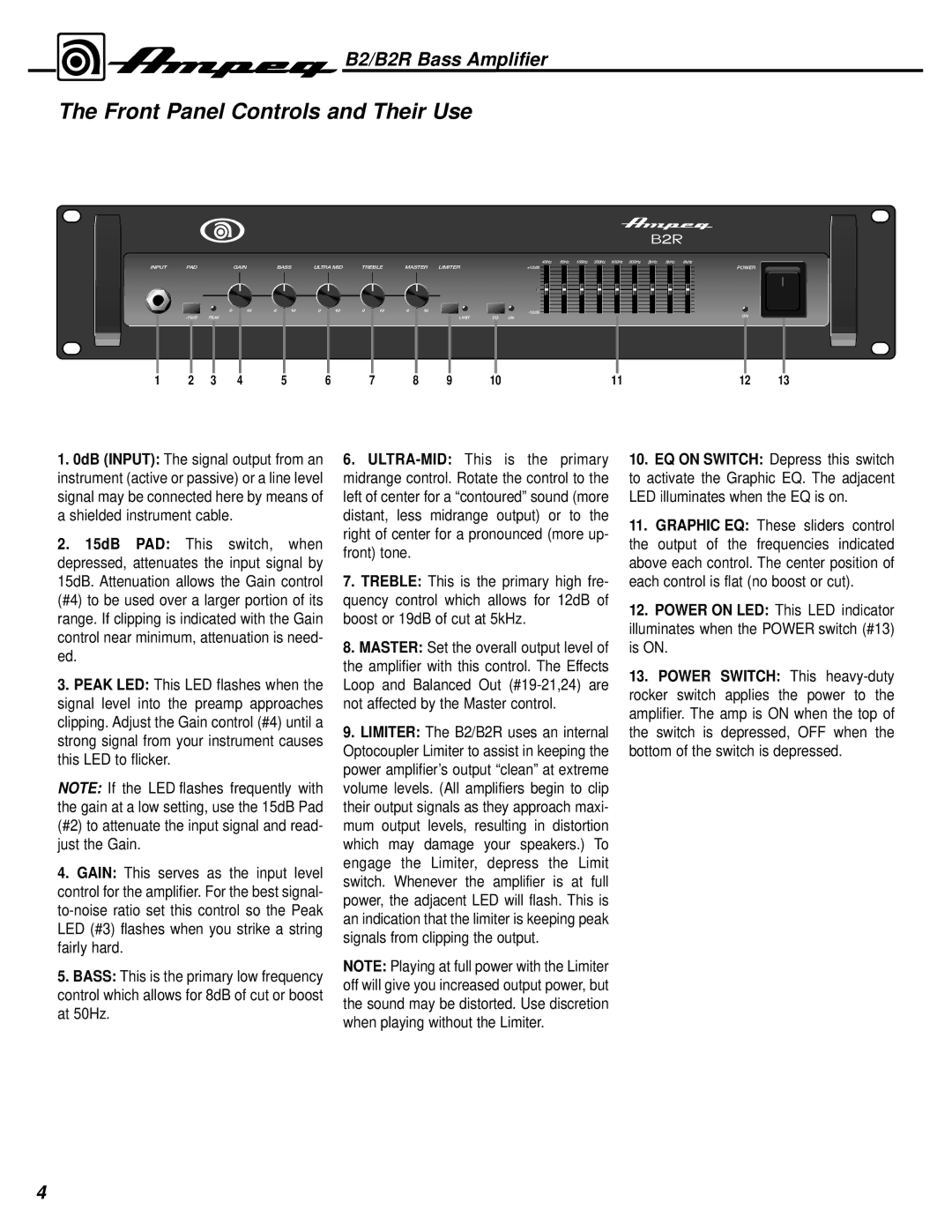B2R, B2 specifications
The Ampeg B2 and B2R are renowned bass amplifiers that have carved a niche for themselves in the music industry, particularly among bass players seeking powerful, versatile, and high-quality sound. These models exemplify Ampeg's long-standing heritage in producing exceptional bass amplification products.At the heart of the B2 and B2R amplifiers is a solid-state design that ensures reliability and exceptional performance. The B2 model features 100 watts of power, making it suitable for practice sessions and smaller gigs. Meanwhile, the B2R pushes the envelope with 200 watts, allowing it to perform effectively in larger venues without compromising sound quality or clarity.
One of the standout features of both models is the built-in preamp, which includes Ampeg's signature tone stack. This circuitry enables players to shape their sound with precision, offering controls for treble, midrange, and bass frequencies. Whether you desire a punchy tone or something more subdued, the B2 and B2R offer the flexibility to achieve your preferred sound.
Both amplifiers also feature an equalization section that allows for deep tonal control, ensuring that every note played translates into a captivating sound. Additionally, they come equipped with a parametric midrange control, giving players the ability to specifically target frequencies for further refinement.
The B2 and B2R also boast an innovative direct output feature, making it easy to connect to recording devices or mixing consoles. This means musicians can achieve that rich, Ampeg tone even during studio sessions without needing to mic an amp. The inclusion of a headphone jack also enhances their usability, allowing for silent practice.
Durability is key in live performance settings, and Ampeg has built the B2 and B2R to withstand the rigors of touring and gigging. The rugged construction and high-quality components ensure that these amplifiers deliver reliable performance time after time.
In conclusion, the Ampeg B2 and B2R amplify the essence of what makes Ampeg a respected name among bass players. The combination of powerful output, versatile tonal shaping options, and robust design creates a compelling choice for any bassist looking to enhance their sound and performance. Whether on stage or in the studio, these amplifiers continue to be favorites among musicians striving for excellence in their craft.

